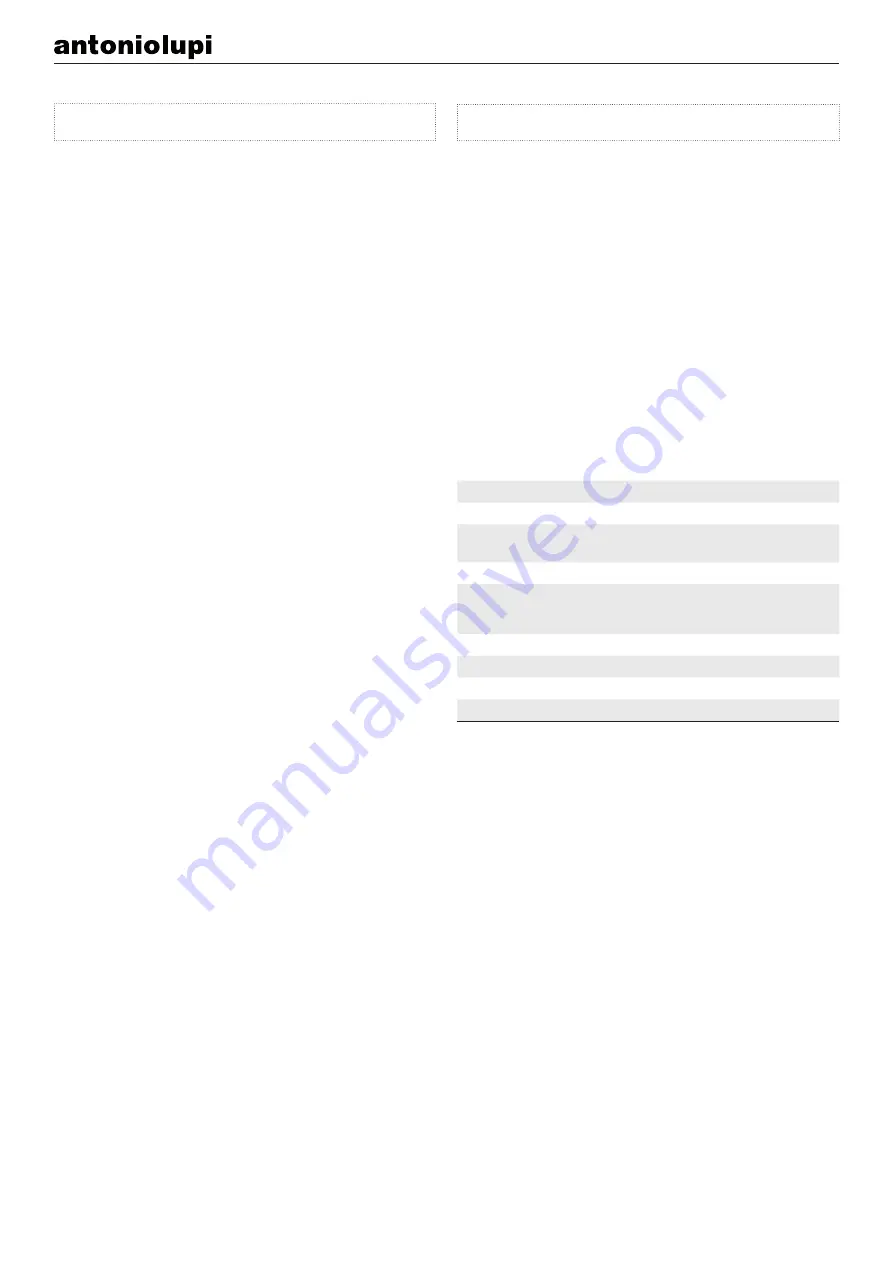
PRODUCT DESCRIPTION
MATERIALS USED
USAGE AND MAINTENANCE INSTRUCTIONS
Corian®
CORIAN
®
Corian® is a solid, non-porous surfacing material homogeneously
composed of ±1/3 acrylic resin (also known as PolyMethyl MethAcrylate
or PMMA), and ±2/3 natural minerals. These minerals are composed
of Aluminum TriHydrate(ATH) derived from bauxite, an ore from which
aluminum is extracted. Corian® is the original material produced by
DuPont for solid surfaces.
Being inherently “renewable” because it is solid and homogeneous all the
way through. Most damages, including severe impact, heat or chemical
damage, can usually be repaired on site to restore the original, smooth,
hygienic solid surface integrity.
CLEANING *
Clean with a damp cloth or with common liquid detergents for domestic
use. Particularly recommended are liquid detergents such as CIF® used
with an abrasive sponge such as a SCOTCH BRITE® pad. Do not use
aggressive chemical products such as acetone, trichloroethylene nor
strong acids. Warning: Level sinks, shower trays and tubs.
Cleaning of wood covering
Avoid using common products for cleaning the wood which can damage
the matt finish. Use exclusively the CLEANWOOD product provided by
our company. Use a damp cloth and distribute evenly over the surface to
clean. Avoid the use of abrasive sponges.
Cleaning of lacquered covering
Clean the furniture with a soft damp cloth or non abrasive sponge or with
diluted acetyl alcohol. All cleaning should be done with great care so as
not to scratch the surface.
TOXICITY
The product does not appear toxic to humans, animals or to the
environment. Only discard in appropriate disposals according to rules
and regulations in your area
.
ECOLOGY
Only discard in appropriate disposals according to rules and regulations
in your area.
WARNING
The sinks, shower trays and tubs must be installed leveled.
CLEANING INTEGRATED SIPHONS IN SINKS
Often clean the integrated siphon to eliminate any deposits.
. Position a container under the sink in correspondence with the inspection
cap positioned centered under the sink to capture dirty water.
. Unscrew the inspection cap and completely empty the siphon.
. Allow hot water to run through the sink and thoroughly clean the slit in the
sink.
. Screw back on the inspection cap and let water run to fill the siphon back
up.
Common household spills
Procedura
Everyday cleaning.
A. B. C. E.
Vinegar, coffee, tea, lemon juice, vegetable, dyes,
ketchup. grease, fat and oil residues
A. B. C. D.
Water scale, soap, minerals.
A. B. F.
Pollen, saffron, a light scratch, cigarette burns, shoe
polish, Ink, marker pen.
A. B. C. E.
Mercurochrome, blood, red wine, perfume.
A. B. C. D. E.
Nail varnish spills.
A. B. C. G.
Iron or rust.
A. B. C. H.
Iodine, mildew.
A. B. C. E.
A
Remove excess with a soft cloth
B
Rinse surface with warm water and dry with a soft cloth
C
Use a damp cloth and a mild cream abrasive cleanser. (e.g. Jif active, Bar
Keepers Friend);
D
Use an abrasive plastic scouring pad (e.g. Scotch-Brite
®
type) and rub over
the stain with detergent or an ammonia based hard-surface cleaner (e.g. Flash,
Mr. Muscle, Comet)
E
Use an abrasive plastic scouring pad (e.g. Scotch-Brite
®
type) and rub over
the stain with some bleach** (Javel). Rinse several times with warm water and
dry with a soft cloth **
F
Use an abrasive plastic scouring pad (e.g. Scotch-Brite
®
type) and rub over the
stain with standard household lime-scale remover or vinegar (e.g.Viakal type).
Rinse several times with warm water and dry with a soft cloth
G
Use an abrasive plastic scouring pad (e.g. Scotch-Brite
®
type) and rub over
the stain with non-acetone based remover. Rinse several times with warm water
and dry with a soft cloth
H
Use an abrasive plastic scouring pad (e.g. Scotch-Brite
®
type) and rub over the
stain with a metal cleaner or rust remover. Rinse several times with warm water
and dry with a soft cloth
*
Clean using a circular motion
**
La candeggina può scolorire il Corian
®
se non è rimossa completamente
risciacquare con abbondante acqua
Warning:
The current product information complies with law n.126 of the 10th of April 1991 “Regulations for consumer information” and to ordinance
n.101 of the 8th of February 1997 “Fulfilment Regulations”


























